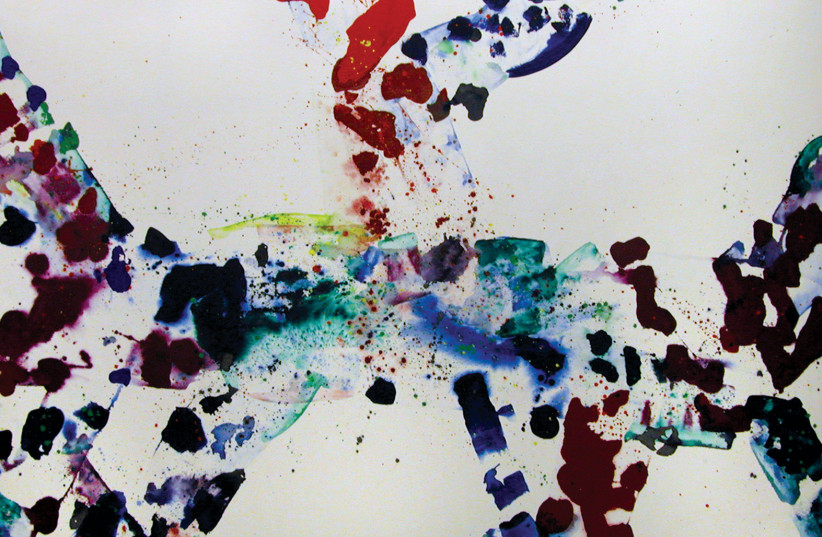The crème de la crème of the Israeli art world and culture sphere gathered during an unforgettable Thursday evening for the grand opening of Fields of Abstraction.
The comprehensive exhibition seeks to introduce the art of Jackson Pollack, Clement Greenberg, Kenneth Noland, Sam Francis and other major 20th-century painters and critics to Generation Z .
Sharply dressed in a black suit with a reversed puff pocket square, new Israel Museum Director Denis Weil told In Jerusalem that he is “excited to be here.” During the reception he told the audience of the museum’s desire to share its incredibly rich collection with the public.
The exhibition of 43 paintings, with some outstanding works by artists of great renown like Gerhard Richter and Mark Rothko, includes bright stars from Israeli art past and present.
A 1984 “Untitled” painting by Ukrainian-born artist Lea Nikel seems to eerily connect to our current historical moment. While the work is mostly done in orange, the color that so dominated the 2004 protests in that country, it is still possible to see how the artist used her own fingers on the canvas. Her finger-made smears seem to reach out to us across time.

Making outstanding curatorial choices of juxtaposition, curator Adina Kamien allows us to enjoy the 1959 painting “Plowing under the Snow” by Jean-Paul Riopelle placed next to the 2016 painting “Untitled XI (Thinking Paths)” by Gilad Efrat.
Riopelle’s incredible use of paint and the palette knife nearly turns his canvas into a sculpture. Efrat’s highly intellectual work – the canvas refers to the garden walks enjoyed by Charles Darwin – alludes to the visual language of military maps and drone strikes.
In a splendid Great War anecdote, Picasso himself is said to have gestured to camouflaged military vehicles rolling by in Paris and remarked, “There goes my Cubism.” (I am grateful to the painter Larry Abramson for sharing this story with me in conversation.)
Looking regal in a copper sequined dress, Kamien suggested abstract painting “distills the essence of things.”
To enlighten the audience, several large screens depicting Jules Olitski, Agnes Martin and Pollack are spread in the large space to allow us to encounter them at work and in conversation. The sheer size of many of the works presented makes for a much-needed reprieve from the daily tyranny of the computer screens many of us face daily and the touch screens we carry in our pockets to navigate daily tasks.
The guided audio tour of the exhibition includes music by composer Stephen Horenstein, who was present, and also guided meditation instructions.
Abstract painting became associated with the sort of freedom and individuality celebrated in American culture during the postwar years and is ergo a great part of the so-called American Century.
It played on some key notions, among them the artist as a lone genius, usually male, who drips on vast canvases to comment on the age of the atom bomb – which might seem less appealing to us in hindsight.
Those curious to learn more might do well to see the 2000 biopic Pollock, where Jeffrey Tambor took on the role of art critic Clement Greenberg, and Ed Harris that of the great painter.
It is this powerful bond between artist and thinker, jazz music and color – even between what art strives for and democratic values – that makes this exhibition a pleasure for the soul and the eyes.❖
For more information: www.imj.org.il/en/exhibitions/fields-abstraction
